Update February 2020:
I measured the Quooker’s power consumption for you. You can find the article with lots more interesting information HERE
Update January 2020:
We are still extremely satisfied with the Quooker and it is one of the most important appliances in our kitchen. There are a few strange reviews on Amazon from people who don’t even use the Quooker but have an opinion about it. There is no risk of injury as you can’t accidentally start the hot water – not even children. And even if you briefly get under the boiling hot water, nothing happens as the jet is finely beaded and there is no risk of immediate scalding.
The power consumption is absolutely negligible in our detached house and disappears in the overall consumption. Amazon also talks about instantaneous water heater consumption. Thanks to the vacuum insulation, the Quooker only heats up briefly as long as no water is being drawn. Our LCN Issendorff home automation system simply switches it off when you are away for a longer period of time – and switches it on again automatically.
Mrs Nachbelichtet commented just today: “The Quooker and our ice cube maker are the most amazing pieces of equipment in our kitchen, which we would never have thought would be so useful before.
Update February 2019:
After a good six months in the new house, with the new kitchen and the Quooker, we can say that we can no longer imagine our everyday life without the Quooker. Quickly blanching tomatoes so that they are easy to peel, hygienically clean chopping boards, quick pasta water, etc., are simply extremely practical. Here, too, you only really appreciate the advantages once you have had the chance to use it for a while.
The Quooker has also been given another task: It is the perfect plate warmer! When fitting out our kitchen, we had actually planned a plate warmer from Miele. Unfortunately, almost nothing fits in the small model and the large model would no longer have fitted into our kitchen design. What’s more, these electric plate warmers need quite a long lead time.
The Quooker, on the other hand, is extremely quick: simply hold the plate at an angle under the water jet and rinse with boiling water. After a few seconds, you have a hot, pre-heated plate. Run a kitchen towel over it and you’re ready to serve. This also works very quickly and effectively with several plates.
We have now been in our new house for almost 3 weeks and, as you may know, we have also decided in favour of a smart home. A smart home also includes smart household appliances that make life more convenient. The Quooker boiling water tap is definitely one of them and we have tested it extensively over the last few weeks.
Hot water usually comes directly from the sink mixer tap. However, this water is usually only around 60 °C and is therefore not suitable for brewing tea, for example. So far, we have also used a kettle for boiling water: Fill with water, switch on and wait. Of course, you don’t stand next to it all the time, so it happens time and again that the water boils, the kettle switches off and by the time you realise it, the water has cooled down considerably.
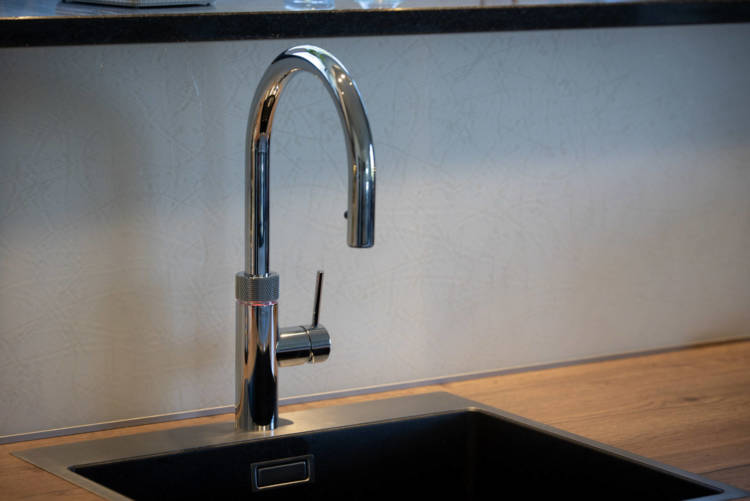
As Mrs Nachbelichtet drinks a lot of tea, there is a constant need for hot water. However, we have realised that boiling water is needed much more often and there are many uses for the Quooker.
The Quooker – boiling hot water directly and immediately from the tap
The Quooker consists of two parts: A stylish tap (which is available chrome-plated or in all-stainless steel) with a mixer tap and a reservoir that always has boiling water ready, based on the principle of a thermos flask with high-vacuum insulation. The tap itself can simply be replaced with a conventional tap. The reservoir is housed in the cupboard under the sink.
Assembly and installation
We use the Quooker Flex in chrome together with the PRO3 reservoir. The PRO3 is approx. 40 cm high and measures 15 cm in diameter. As we have a waste separation insert in our sink base cabinet, we were worried that we wouldn’t be able to fit the reservoir in. However, there was actually enough space at the back of the cupboard to accommodate the PRO3. Incidentally, the reservoir stands very well on its own – but a special holder is also available. Sink cabinets are usually always open at the back and have a few centimetres of space between them and the wall, so the PRO3 should actually fit in most kitchens.
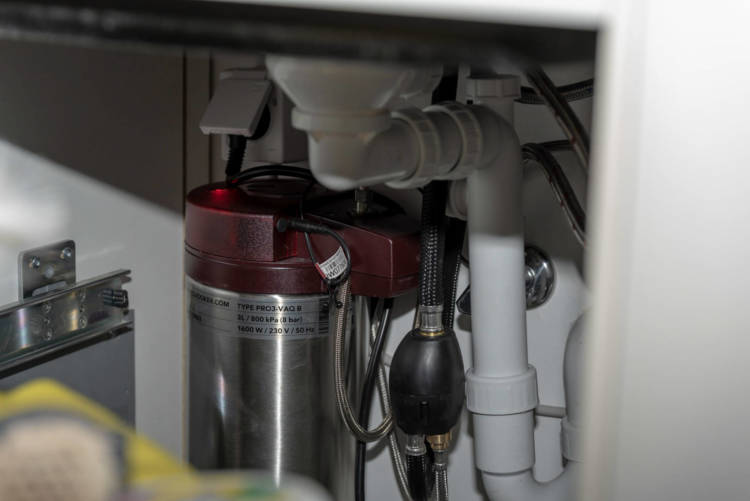
Incidentally, the name “Flex” comes from the fact that this model has a flexible, extendable hose.
The reservoir is connected to the cold water pipe. A tap hose must also be connected to the cold water pipe. If you have already connected a dishwasher, you will need a suitable branch valve.
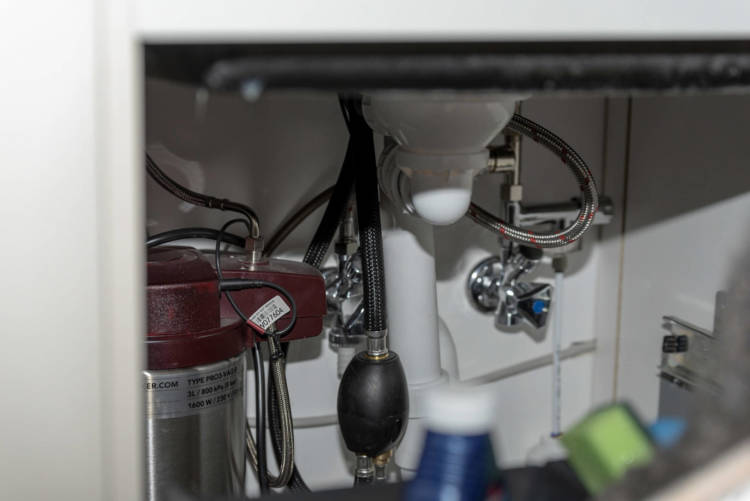
A total of 3 supply lines then go to the Flex tap: Cold water, normal hot water and the boiling water from the PRO3 reservoir. You also need a socket near the reservoir. A thin cable with a jack plug connects the Flex tap to the PRO3 reservoir, as the tap has its own control element for the boiling water function. The switch is located on the top of the PRO3 and a red LED signals operation.
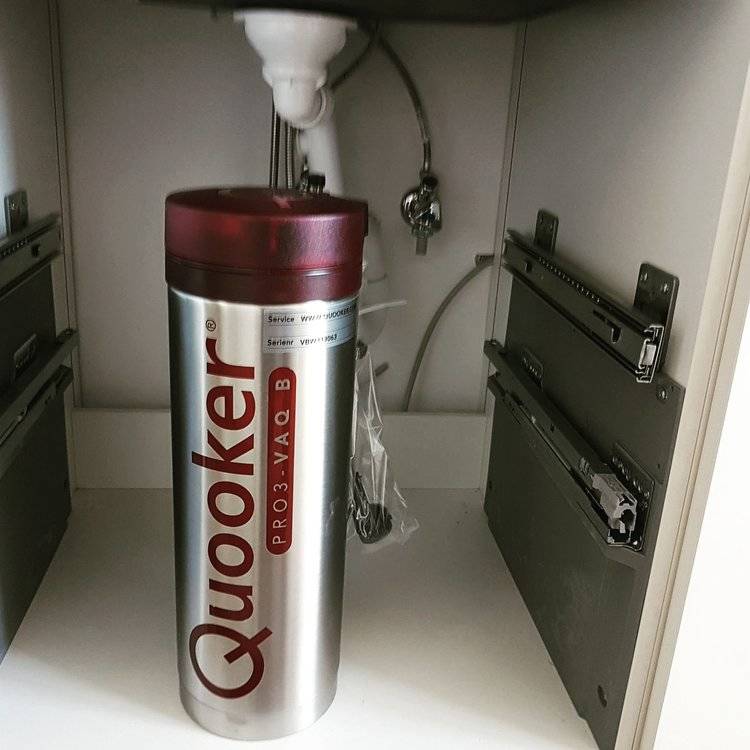
Installation is no problem for skilled users and if – like us – you are getting a completely new kitchen, you can provide the appropriate connections and ask the kitchen planner to take the space for the Quooker into account.
How the Quooker works
The Quooker adds the boiling water function to the tap. The normal mixer lever on the Flex still has the same function: it is used to regulate hot and cold water. If you now want to draw boiling water, a special control element is used directly on the tap. The ribbed ring is moved downwards twice quickly and then turned to the right. This is a safety function that prevents boiling water from being accidentally removed and also serves as a child safety lock.
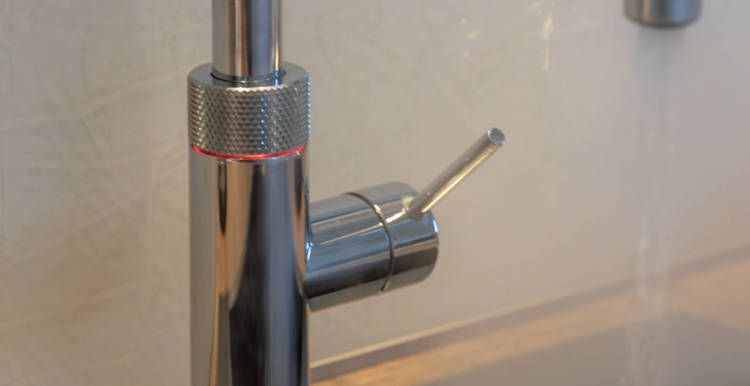
Just below this control element, a red LED ring lights up when the reservoir is being tapped and heated up. This LED causes many visitors to legitimately ask what kind of tap this is.
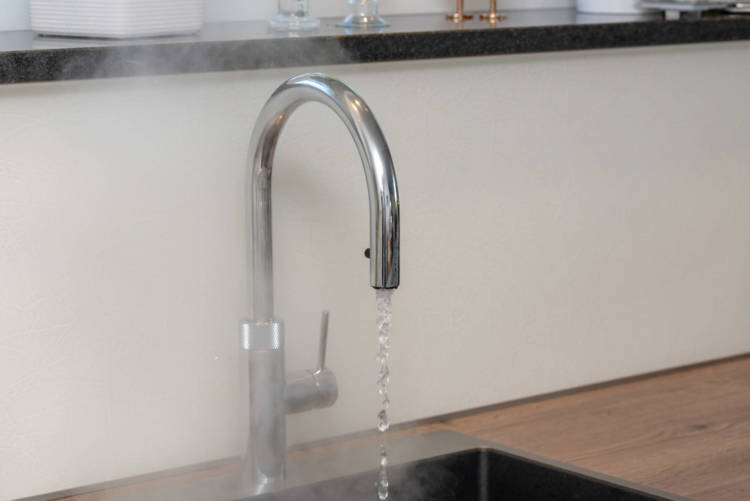
If you turn the knob in the right order, you immediately get 100 °C hot water. This is quite impressive the first time you use it, because you are not used to this straight from the tap and it is accompanied by hissing and steam.
Equally impressive is the fact that the tap spout itself remains cool, as it is double-walled. This means you can touch the tap safely during or immediately after hot water extraction.
Furthermore, the boiling water does not come out of the tap in a sharply focussed jet, but in the form of small droplets. On the one hand, this is the result of the water vapour that is produced when the water is 100 °C hot. However, it is also a safety feature, as the tiny water droplets prevent scalding.
The Quooker hot water tap in practical use
You quickly get used to the added convenience of the Quooker. You can brew a thermos flask of tea or even just a cup without having to wait. In fact, the Quooker has many other uses. The extremely hot water can be used to scald tomatoes and peel them quickly and easily. You can also blanch vegetables quickly and easily. Pasta with short cooking times can be cooked al dente using only the boiling water from the Quooker – without the need for a cooker. The same applies to parboiled rice (10 minutes cooking time), couscous or polenta.
If you are in a hurry, you can also fill a pot with boiling water – e.g. for potatoes – and no longer have to wait for the cooker to bring the water to the boil. Eggs can be cooked directly with the water from the Quooker – without the need for an egg cooker or cooker.
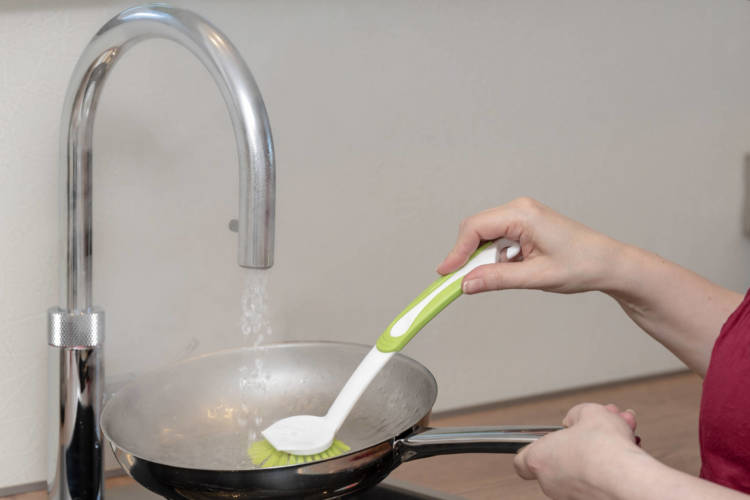
I practically only use iron and stainless steel pans. Both have no place in the dishwasher. Iron pans inevitably rust and the food starts to stick to stainless steel pans. They should therefore only be cleaned with hot water and without detergent. The Quooker has proven to be extremely helpful here, as the boiling water removes even the most stubborn residues without the need for washing-up liquid etc.. This means that a pan can be used for another application immediately after use.
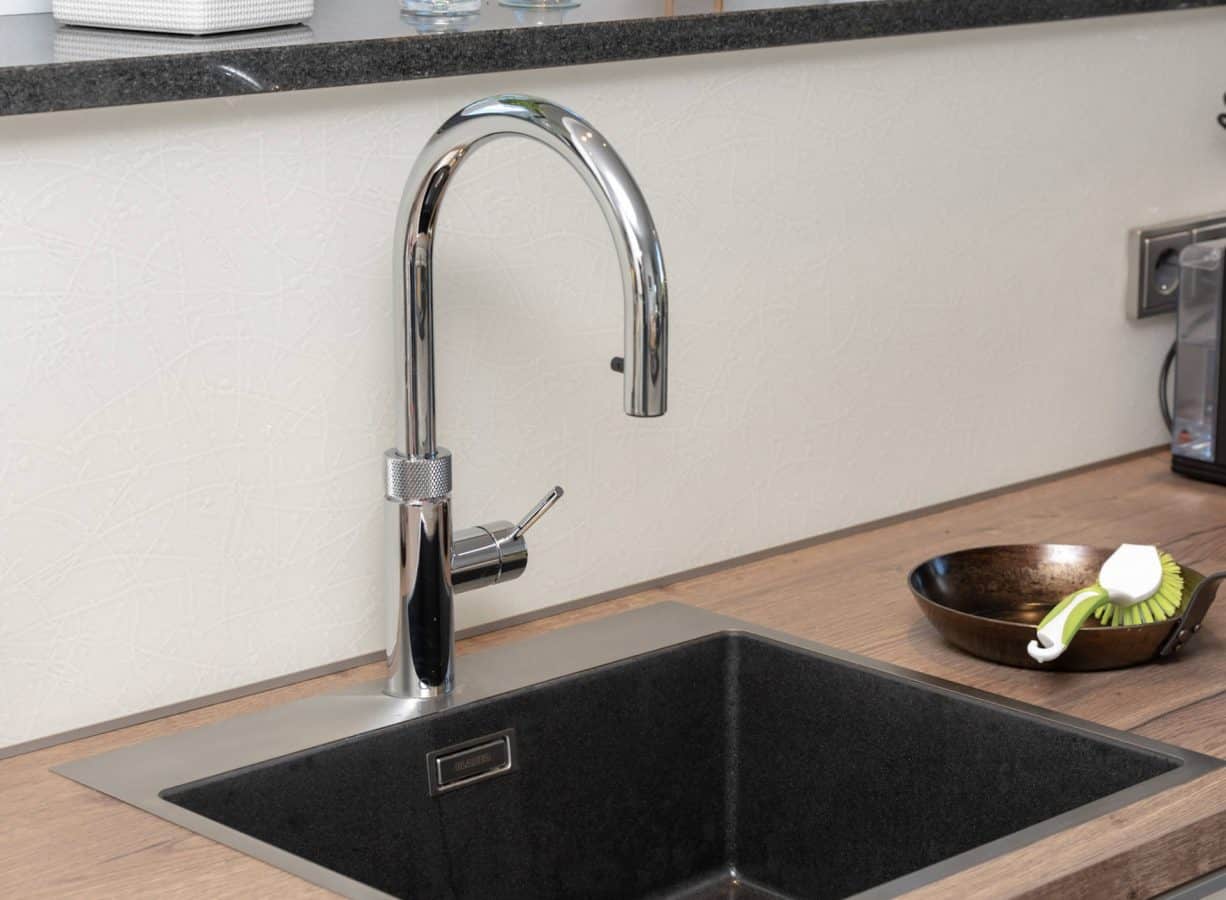
Boiling water is particularly helpful when it comes to hygiene. Baby bottles and dummies can be disinfected quickly and easily, but the sink or chopping board is also hygienically perfect again after rinsing with boiling water, which is particularly important when processing poultry, fish and meat.
For safety reasons, the Flex hose can only be used for cold and hot water, which is very understandable given the risk of scalding.
Consumption issues
To ensure that the Quooker can provide boiling water at all times, it must be regularly reheated. Fortunately, the high-vacuum insulation of the reservoir means that this does not have a significant impact on consumption. The Quooker only requires 10 watts in standby mode. This means a power consumption of 5 to 6 cent per day. If boiling water is used frequently, it will of course have to be heated up again. Despite this, I have not yet noticed any significant increase in power consumption compared to using the kettle and cooker. I can’t provide any reliable figures yet, but I would even say that my electricity consumption is significantly lower because I heat less water on the hob.
This is how much electricity the Quooker really consumes
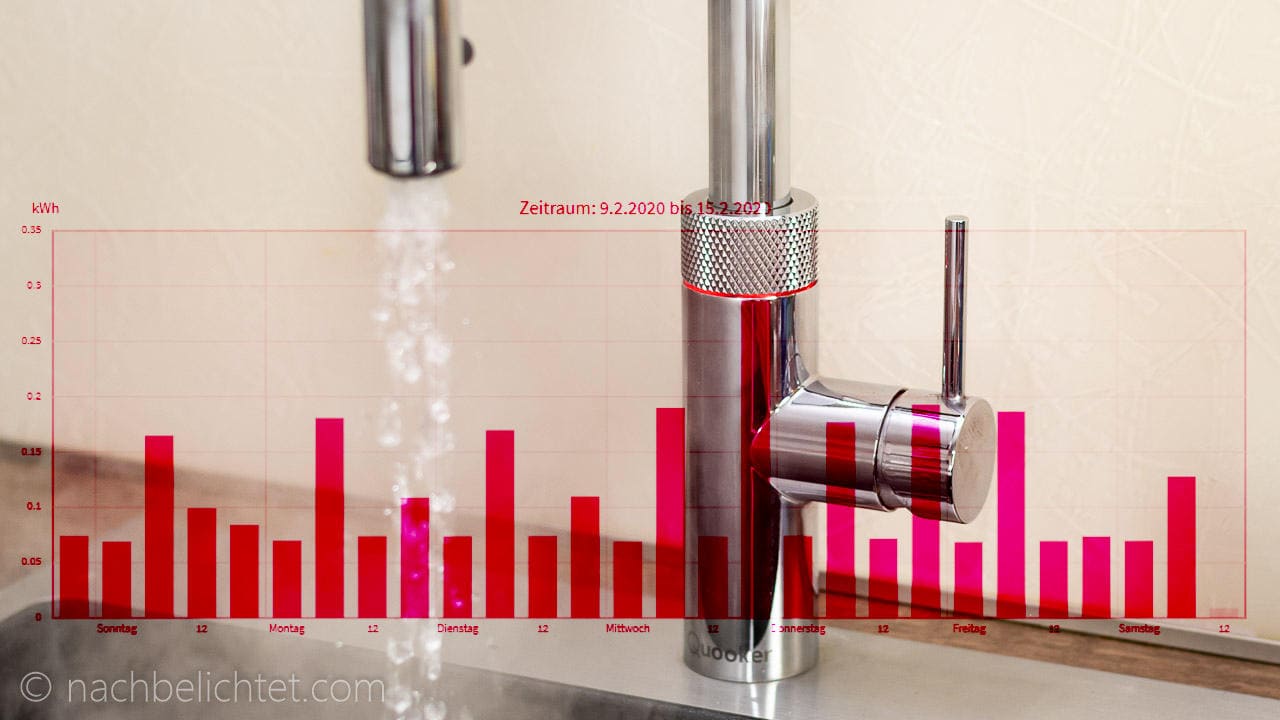
I have measured the Quooker’s power consumption for you and you will be surprised how little the Quooker actually uses.
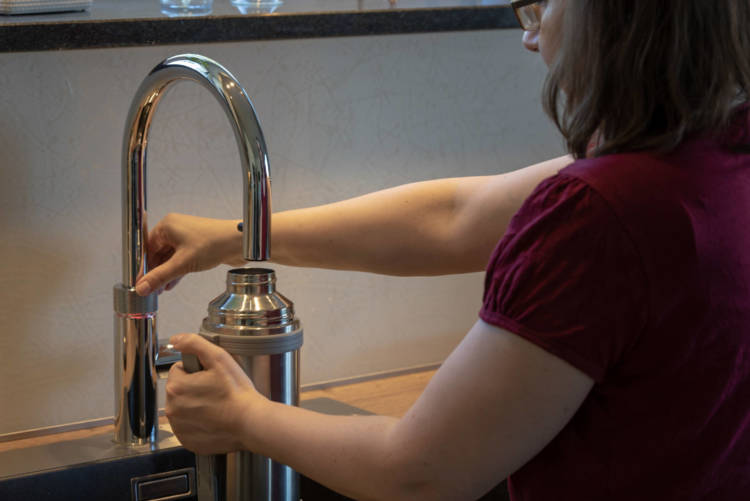
We have noticed that we now only use very little water from our normal hot water supply. If we wash something by hand, we almost exclusively use the boiling water from the Quooker. It’s quicker and more thorough. In addition, for hot water you usually have to let a lot of water run away until really hot water arrives – even with a proper circulation pipe. With the Quooker, however, you have hot water available immediately and save water and energy at this point.
In contrast to a kettle, with the Quooker you only draw exactly the amount of hot water that you actually need.
Interim conclusion
The Quooker undoubtedly makes the kitchen “smarter” and after a very short time you will take the boiling water function for granted. As an enthusiastic amateur cook in particular, you learn to appreciate the immediate availability of boiling water, have fewer pots on the hob and reach your goal more quickly. But the Quooker also makes kitchen hygiene much safer. You can quickly rinse a chopping board or knife with boiling hot water.
The Quooker Flex in chrome with the PRO3 reservoir costs 1295.00 euros. Of course, this is no small price to pay for a convenience function in the kitchen, just like a steam cooker or a fridge with ice cube function. However, if you are looking for the perfectly equipped kitchen, you will not be able to avoid the Quooker and will be willing to invest money in it.
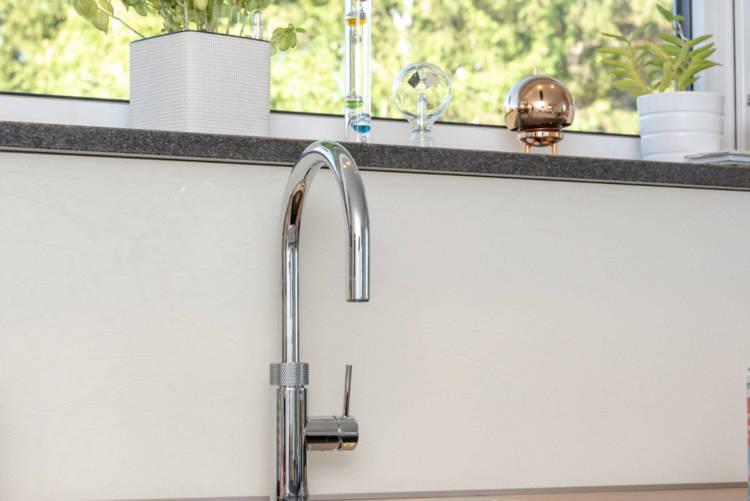
Why an interim summary? We’ve only been in our new home for a few days and still have to get used to it. This also means that we still have to “experience” the new kitchen. There are sure to be many more uses for the Quooker, which I’ll tell you about soon.
More information about the Quooker and the other Quooker models: https://www.quooker.de
Letzte Aktualisierung am 2025-07-11 / Affiliate Links / Bilder von der Amazon Product Advertising API

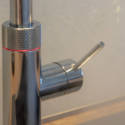
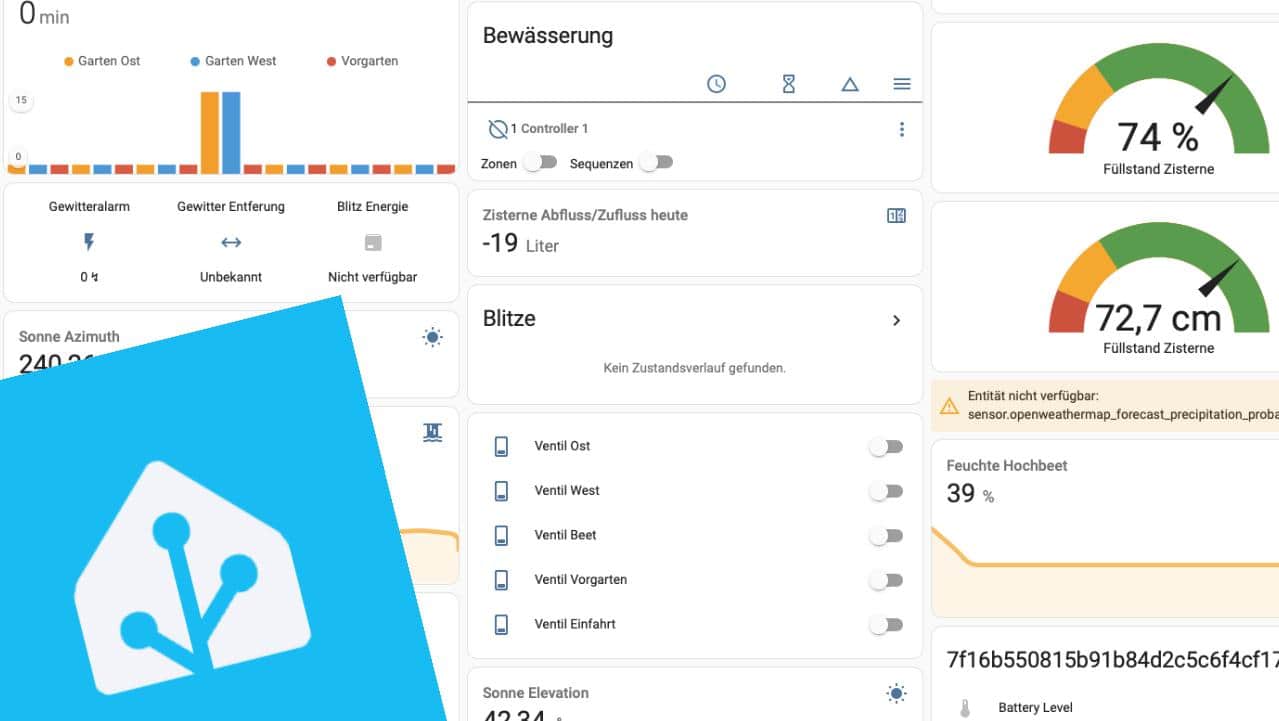
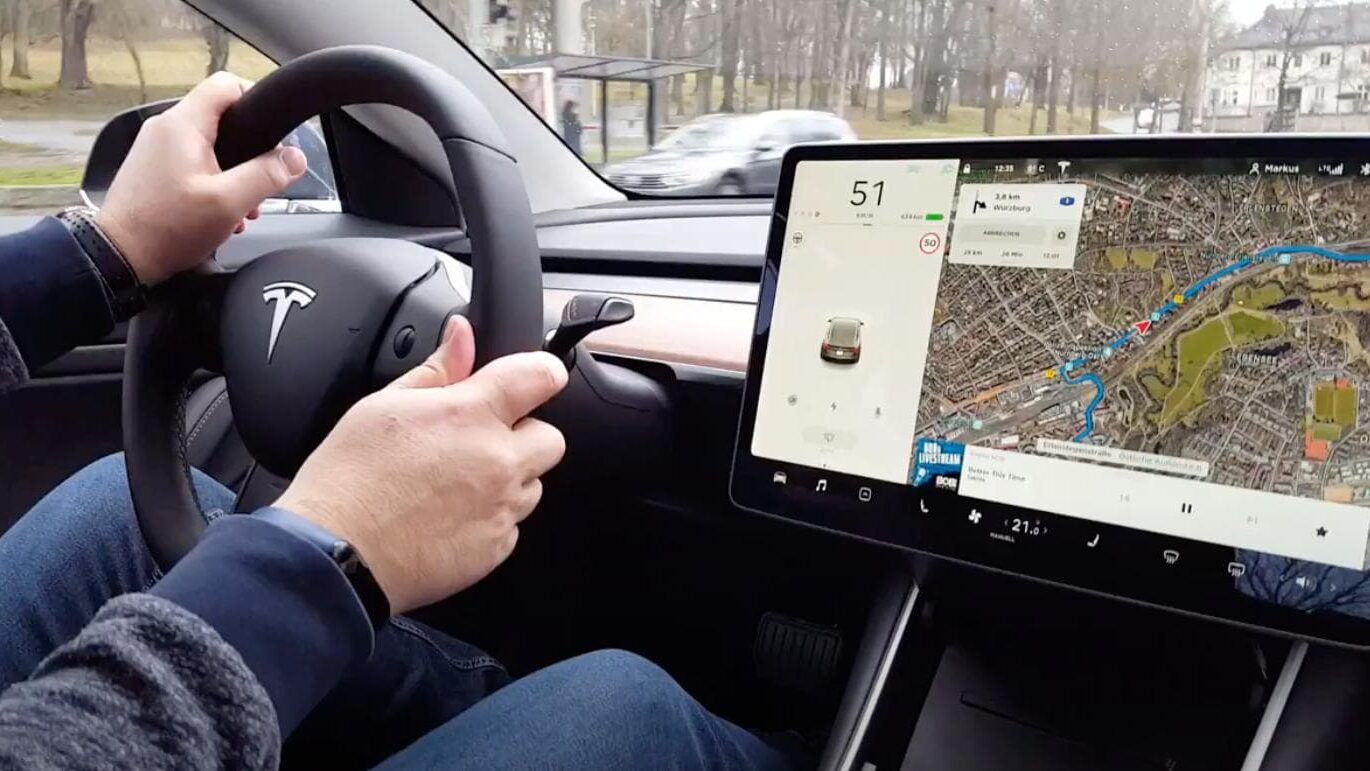
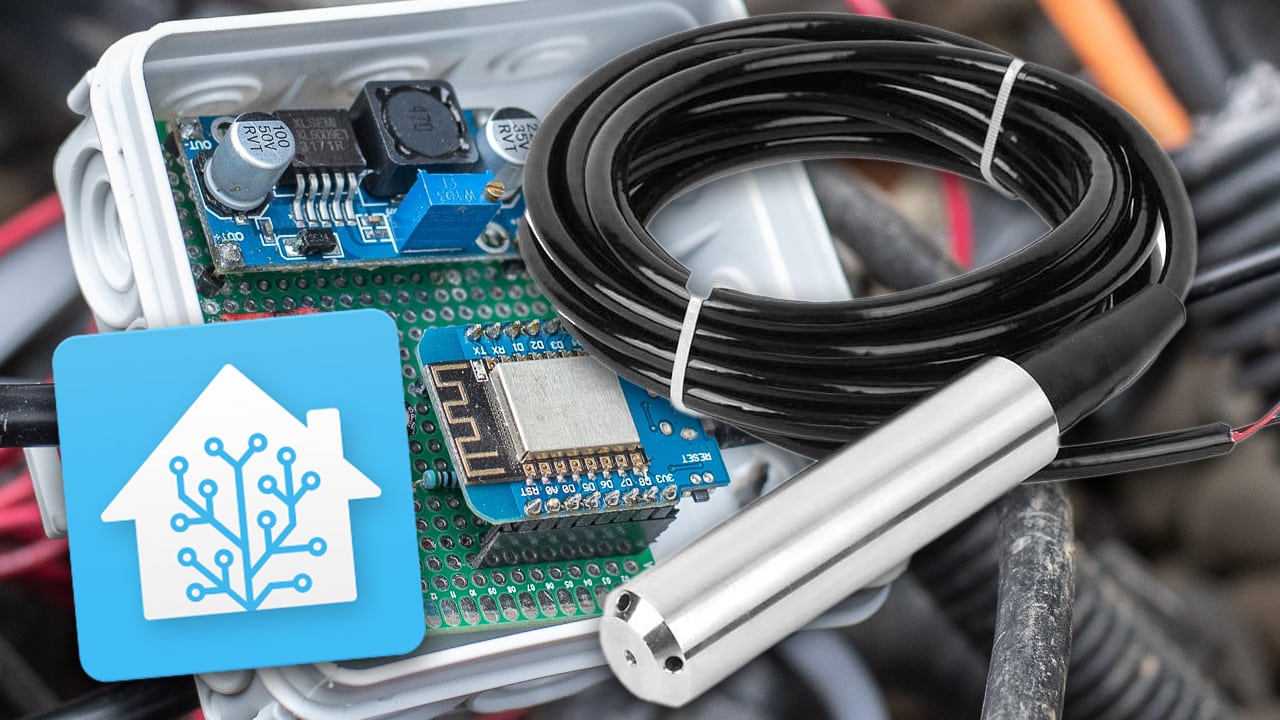
Leave a Reply